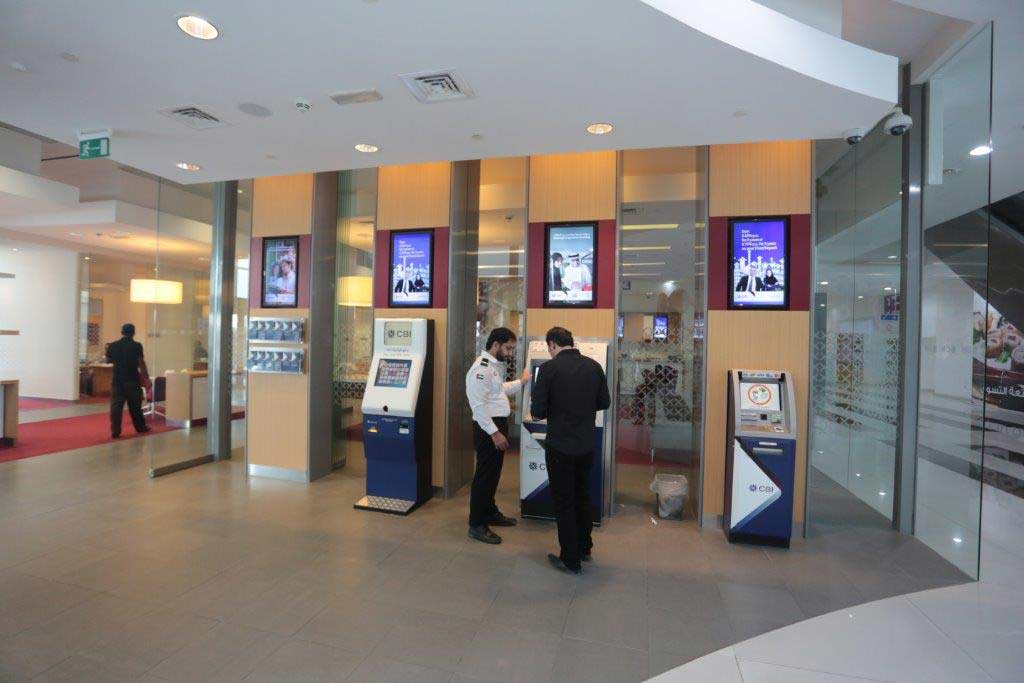Digital Signage for Banks and Financial Institutions
Visit a retail bank and you’ll see video walls and large flat-panel displays, similar to those used in fashion stores for decades. Banks and financial institutions are now actively using digital signage to improve the customer experience in branches. They realize that the retail aspect of their business can benefit from digital signage technologies, just like other brick-and-mortar locations. Let’s learn more about modern signage solutions for banks!
Even ATMs can benefit from digital signage!
ATMs have been evolving to keep up with the latest technologies. It’s not uncommon for modern ATMs to feature full-color displays, RFID, and NFC technologies. The underlying PC hardware has also been beefed-up and many ATMs can now support basic digital signage software features while still performing their core function. The same software that runs in-branch displays can also manage the advertising running on ATM screens and in other locations such as outside LED boards.
Digital signage solutions are now able to provide a unified point of control for all screen-based banking communications. Bank staff at every level of the enterprise can manage, approve and control which content plays on which screen across any number of locations.

Additional digital signage benefits for banks
Digital signage messaging can reach every branch regardless of its geographic location. There is no limit to its reach. International banks can manage multilingual content across many countries. This is where banks can achieve the highest return on investment because a single digital signage content management system can be used for the entire organization.
Here are more benefits:
- Using a single, professional-grade solution across an entire organization simplifies support tasks and end-user training.
- A single server can be used to provide services across all regions, or a content management system (CMS) can be invoked for more efficient content delivery over vast distances.
- When combined with external triggers, digital signage can be very effective at grabbing and retaining viewers. For example, displays can be equipped with motion sensors, RFID sensors, Microsoft Kinect sensors, and other devices so the audience can interact with the system to launch various content on demand. Motion sensors can change content when someone passes by a display, further grabbing their attention for a moment.
- The use of electronic beacons and smartphone apps lets customers communicate with the content playing on the screen. Different content can be triggered when a customer running an app is within range of a beacon to further personalize their experience.
- Touch-enabled displays and tablets offer another way of letting the audience interact with the system. Customers can navigate interactive kiosks to retrieve information, review policies, and access many other useful data. Some kiosks even let customers sign in when dropping in for an appointment. They can bypass line-ups and head straight to a waiting area.
- Touchscreens are also used in wayfinding applications where customers can get directions without having to line up at an information desk.
What does it take to make it all work?
As was mentioned earlier, a typical digitals signage software solution is made up of 3 main components:
- The back-end CMS server
- The user dashboard
- The media player
Of course, there are many other software components that are included in a typical digital signage solution. These are background services that are always running to ensure optimal and reliable operation.
Most banks and financial institutions purchase and host their CMS servers in-house. This is also referred to as an “on-premise” solution. The bank’s own IT support personnel manages and maintains the digital signage solution on its own rather than hosting the software on an independent third-party hosting provider (also referred to as a “cloud” solution).
Banks tend to prefer web-based software dashboards over locally installed software as these products tend to be easier to deploy and maintain. There is no local software versioning issues to deal with since everyone accesses the same information from a central server.
The banking sector also prefers professional, native standalone player software since this type of product outperforms other solutions. Native software has fewer stability issues and the content is rendered in a much higher quality than products based on interpreted software languages.
Why your branch should use signage solutions for banks
Digital signage is an effective communication tool that can be used by banks to provide information to customers, promote products and services, and enhance their overall brand image.
Here are 3 ways banks can use digital signage:
- Promote Products and Services: Digital signage can be used to promote new products and services offered by the bank. This can include information on interest rates, loan options, credit cards, and more. By displaying attractive visuals and persuasive messaging, banks can entice customers to inquire about their offerings.
- Provide Information: Digital signage can be used to provide information about the bank’s services, policies, and procedures. This can include information on opening hours, ATM locations, customer support services, and more. This information can help customers understand how to use the bank’s services and can help reduce the workload on bank staff.
- Wayfinding and Directional Signage: Digital signage can be used to provide directional signage within the bank, making it easier for customers to navigate the bank and find the services they require. This can include floor plans, maps, and directional arrows that guide customers to specific locations.
3 more ways banks can use digital signage:
- Interactive Signage: Interactive digital signage can be used to engage customers and make their banking experience more enjoyable. This can include interactive games, surveys, or contests. Interactive signage can help improve customer engagement and loyalty.
- Advertising Partnerships: Digital signage can be used to showcase advertising partnerships with other businesses, such as local restaurants, retailers, and entertainment venues. This can be a win-win situation for both parties, as the bank can provide valuable information to customers while promoting the products and services of the partner businesses.
- Internal Communication: Digital signage can be used as an internal communication tool within the bank. This can include information on upcoming training sessions, staff announcements, and important company updates. Digital signage can help improve communication between staff members and improve their overall work environment.
In conclusion, digital signage can be used in a variety of ways by banks to improve customer engagement, promote products and services, provide information, and enhance their overall brand image. By using digital signage, banks can improve customer experiences, reduce the workload on staff members, and increase brand recognition.
